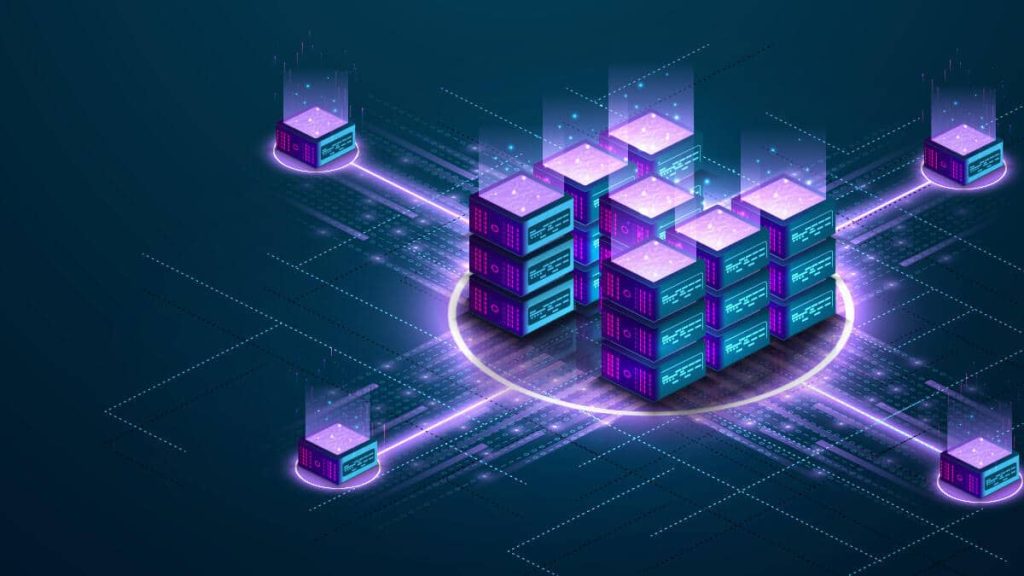Introduction
Blockchain technology, since its inception with Bitcoin in 2008, has been a revolutionary force across various industries. One of its most transformative aspects is the introduction of decentralization—removing the need for centralized intermediaries like banks, governments, and other authoritative bodies. The fundamental principle of blockchain is peer-to-peer interaction without the need for trust in a third party.
At the heart of this decentralization is On-Chain Governance—a mechanism by which decision-making is done collectively by the participants in a blockchain network. This eliminates the need for a centralized governing body, allowing the community to manage and shape the future of the blockchain. As blockchain applications expand beyond cryptocurrency into sectors like finance (DeFi), supply chains, voting, and governance systems, On-Chain Governance becomes essential to sustain the blockchain’s decentralized ethos while maintaining security, scalability, and efficiency.
This article explores the intricacies of On-Chain Governance, its potential, challenges, and how it could redefine management and decision-making in decentralized systems.
1. What is On-Chain Governance?
On-Chain Governance is a decentralized approach to managing a blockchain protocol where decision-making is conducted directly on the blockchain rather than off-chain (through centralized organizations, corporations, or governing bodies). On-chain governance allows blockchain participants—whether individuals, organizations, or validators—to propose, vote on, and implement changes to the network in a transparent and democratic manner.
In traditional systems, governance involves a centralized body that enforces rules, approves changes, and enacts policies. By contrast, On-Chain Governance ensures that decision-making power is distributed, and the rules governing the system are codified into smart contracts and enforced automatically by the blockchain.
Key features of On-Chain Governance include:
- Proposal Mechanism: The ability for any participant to propose changes to the blockchain protocol (like updates, network improvements, or amendments to rules).
- Voting Mechanism: Participants vote on proposals, and the weight of their votes often corresponds to their stake or participation in the network.
- Automated Execution: Once a decision is made, it is automatically executed through smart contracts without any external intervention.
- Transparency: All proposals, voting results, and changes are publicly visible and verifiable on the blockchain, ensuring full transparency.
2. How Does On-Chain Governance Work?
Proposal and Voting Process
On-Chain Governance operates in a highly structured environment, where a formal proposal process is the first step. Participants within the blockchain network can suggest changes to the protocol—whether it’s a technical update, a protocol upgrade, or a new feature.
For example, in Ethereum, the community regularly proposes changes through Ethereum Improvement Proposals (EIPs), which are then voted upon and, if approved, implemented through a hard fork. This process, though primarily off-chain in Ethereum’s case, demonstrates how decentralized protocols allow for governance proposals.
However, some blockchains have implemented a fully on-chain governance system where proposals, discussions, and votes happen directly within the blockchain. This typically involves smart contracts to automate various aspects of governance.
The key steps in on-chain voting include:
- Proposal Initiation: A participant can submit a proposal to improve, update, or change something within the blockchain, such as modifying a protocol rule or implementing new features.
- Voting: Voting usually occurs through tokens or other digital assets staked by participants. The number of tokens held by a participant often determines the weight of their vote. Alternatively, delegated proof-of-stake (DPoS) systems, like those in EOS or TRON, allow token holders to delegate their voting power to trusted representatives.
- Thresholds: For a proposal to pass, it needs to reach a predetermined threshold of votes (either as a percentage of total votes or a fixed amount of votes).
- Automated Execution: Once a proposal has met the voting criteria, its execution is automated via smart contracts, ensuring immediate application without human intervention.
3. Types of On-Chain Governance Models
On-chain governance is not a one-size-fits-all system. It varies depending on the blockchain protocol, consensus mechanism, and the desired degree of decentralization. There are several models, each with its own approach to governance.
1. Direct Voting Model
In the direct voting model, all stakeholders (token holders or validators) are given the power to directly vote on proposals. The most well-known example of this model is Tezos, which uses a proof-of-stake (PoS) system where token holders can vote on the future direction of the protocol, including changes to the blockchain’s code or governance rules.
Advantages:
- High democratic engagement since every token holder can participate.
- Direct influence on governance decisions.
Disadvantages:
- Can lead to voter apathy in large-scale networks.
- Centralization risks if a small group holds a majority of the tokens.
2. Delegated Voting (DPoS)
In the delegated proof-of-stake (DPoS) system, token holders vote for a small number of delegates or representatives who are entrusted with decision-making on behalf of the community. EOS and TRON use this model, where delegates propose and vote on changes to the blockchain.
Advantages:
- Increased scalability compared to direct voting.
- Faster decision-making, as fewer representatives need to deliberate.
Disadvantages:
- May result in centralization if few entities dominate the delegate pool.
- Delegates might act in their own self-interest rather than in the best interest of the community.
3. Quadratic Voting
Quadratic voting is a unique method used by some blockchains to ensure that decisions are not simply dominated by the wealthiest participants. This system enables users to allocate votes to proposals, but the cost of voting increases quadratically. This ensures that users who care deeply about an issue can express stronger preferences without enabling rich participants to monopolize the decision-making process.
Advantages:
- Encourages fairer representation for minority voices.
- Helps balance influence between large and small participants.
Disadvantages:
- More complex than traditional voting systems.
- Needs careful implementation to ensure scalability.

4. Benefits of On-Chain Governance
On-chain governance offers several key benefits over traditional centralized governance models. These include:
1. Decentralization and Trustlessness
On-chain governance enforces the core principle of decentralization in blockchain ecosystems. Instead of relying on a central authority or governing body, the network’s participants collectively make decisions. This reduces the risk of single points of failure, ensuring that no entity has undue influence over the network.
2. Transparency
In traditional governance systems, decisions are often made behind closed doors or with limited visibility. In contrast, on-chain governance ensures complete transparency. All proposals, votes, and updates are recorded on the blockchain and can be accessed and audited by anyone at any time. This transparency builds trust within the network and ensures that decisions are made fairly.
3. Efficiency and Speed
Through the use of smart contracts, on-chain governance eliminates the need for intermediaries, which reduces the time taken to make and implement decisions. Proposals are automatically executed once approved, making the governance process more efficient than traditional systems that rely on bureaucratic procedures.
4. Global Participation
On-chain governance allows for global participation, as blockchain networks can be accessed by anyone with an internet connection. This opens up governance to people from diverse backgrounds and locations, ensuring that decisions reflect the global nature of the blockchain ecosystem.
5. Challenges in On-Chain Governance
Despite its potential, on-chain governance faces several challenges:
1. Voter Apathy and Low Participation
In large-scale blockchain networks, voter participation can be low, particularly if the process is complex or if participants don’t feel invested in governance decisions. This can undermine the democratic nature of on-chain governance and allow a small group of active participants to control the direction of the network.
2. Sybil Attacks
On-chain governance systems are vulnerable to Sybil attacks, where a malicious actor creates many fake identities (or nodes) to gain disproportionate influence over governance decisions. This can distort the democratic process and result in decisions that are not in the best interest of the network.
3. Governance Centralization
Although the goal of on-chain governance is decentralization, some networks experience centralization in practice. This occurs when a small group of entities hold a significant portion of tokens, giving them disproportionate voting power. This can undermine the fairness of the system and limit the diversity of opinions.
4. Technical Complexity
Implementing on-chain governance involves designing smart contracts and governance protocols that are both secure and efficient. This requires advanced technical knowledge and expertise, and mistakes in governance mechanisms can lead to vulnerabilities or exploits.
6. The Future of On-Chain Governance
The future of on-chain governance is incredibly promising. As blockchain networks mature and governance systems evolve, the focus will likely shift towards improving scalability, security, and engagement. We are likely to see hybrid governance models that combine the best aspects of delegated and direct voting systems, quadratic voting, and liquid democracy.
Moreover, the integration of machine learning and artificial intelligence could assist in making
more data-driven governance decisions, creating an even more dynamic and efficient system.
On-chain governance has the potential to revolutionize decision-making processes in decentralized systems and beyond, paving the way for more transparent, equitable, and efficient global systems. The true promise of on-chain governance lies in its ability to democratize power, ensuring that the future of blockchain technology remains in the hands of the people.
Conclusion
On-chain governance is not just a theoretical concept—it’s an evolving reality. As more blockchains embrace decentralized decision-making, we will witness a shift toward more transparent, efficient, and democratic systems of management. Despite its challenges, on-chain governance has the potential to play a pivotal role in the future of blockchain technology, ensuring that the principles of decentralization, trustlessness, and transparency remain core to the system.
In the coming years, we can expect more sophisticated governance frameworks to emerge, allowing blockchain networks to overcome their challenges and realize their full potential. With the right design and community engagement, on-chain governance could revolutionize not just the blockchain space, but also the way we approach governance in the digital age.

















































